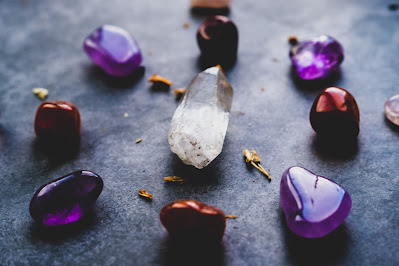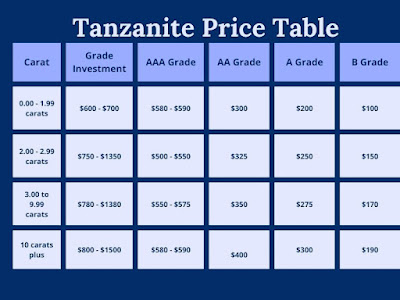The Rising Popularity of Rare Gemstones


 |
| Purple Tanzanite crystals |
Tanzanite is a crystal that belongs to the episode mineral group; the gemstone is a category of the mineral zoisite that grows in blue and violet as a result of vanadium. This super crystal best originates from Tanzania close to Mererani Hills, which makes it extraordinarily rare.
It attained its denomination from Tiffany and Co, conceding Tanzania as the only nation tanzanite gem is mined from. The Tanzanite is a birthstone for December.
Tanzanite crystal seems differently beneath exclusive lights (pleochroic); for instance, it appears bluer beneath fluorescent mild and greater violet.
out the blue-violet hue.
Tanzanite's hardness is 6.5 according to the recordings on the Mohs scale, and it is mined on a small scale of about 7km long and 2km extensive in the North of Tanzania.
Firstly, Tanzanite is solitarily mined in one continent (Africa) and one country, Tanzania. This makes it rarer than the most popular stones in the gems market.
Tanzanite is among the few gems that haven't been successfully synthesized; this contributes to its uniqueness as a crystal since counterfeit stones mess with the natural gem's price.
Tanzanite is a variety of the zoisite family and a trichroic stone, making it even more special.
Tanzanite stone is good at raising one's consciousness since it changes colour when viewed from different directions. To a mind that attracts lots of negativity, Tanzanite acts as a purifier that transforms the negative vibes into positive ones making you more aware of yourself. This effect makes one realize their ideas and brings positive energy into the person.
Tanzanite's price results from its rarity, which means that the price is rising day by day. Here is a chart showing the cost of Tanzanite.
 |
A stone that only comes from one country makes it incredibly rare than diamond, ruby, and emerald combined. This makes Tanzanite's price hike up remarkably hence making it pricey. One carat is about $300-$600.
Regarding rarity and sometimes price, the answer is YES, but if we talk of factors like durability, and hardness, then I would say NO since a diamond can make any jewellery on earth, which is not the case with Tanzanite.
If it is a poor quality diamond with some dull brownish colour, the price would be anywhere from $00-$300 per carat, but if the quality is fine, then a $600-$1000 price is not bad.
In a world where nearly all gems are synthesized, synthetic Tanzanite lacks apparent credibility. The gems being sold today are tanzanite imitations rather than artificial Tanzanite. There has not been an evident success reported on lab-grown Tanzanite.
Most synthetic Tanzanite is forsterite, a mineral made of olivine solid solution series; they closely resemble Tanzanite in pleochroism and colour. Among these are granite, nanoscale, coated and coated Tanzanite, which is pale-coloured Tanzanite that has been painted with cobalt to improve its colour.
Nano tanzanite is a type of Tanzanite artificial for specific jewellery purposes with a homogeneous colour. If you bought 50 blue or violet tanzanites, the colour would be the same for every stone.
What causes tanzanite's colour?
Hobart M. wrote in his article that the small amount of vanadium in the zoisite mineral structure is responsible for the beautiful colours of tanzanite. He added on by saying that when a vanadium-bearing zoisite is heated to around 600 degrees celsius for 30 mins, oxidation occurs and vanadium is changed and the result improves tanzanite's blue colour.
Comments
Post a Comment
Thanks for commenting. Here at Gems Essence, we're glad that you are part of us.